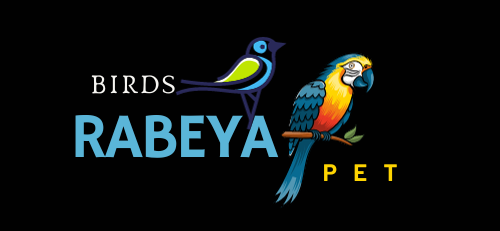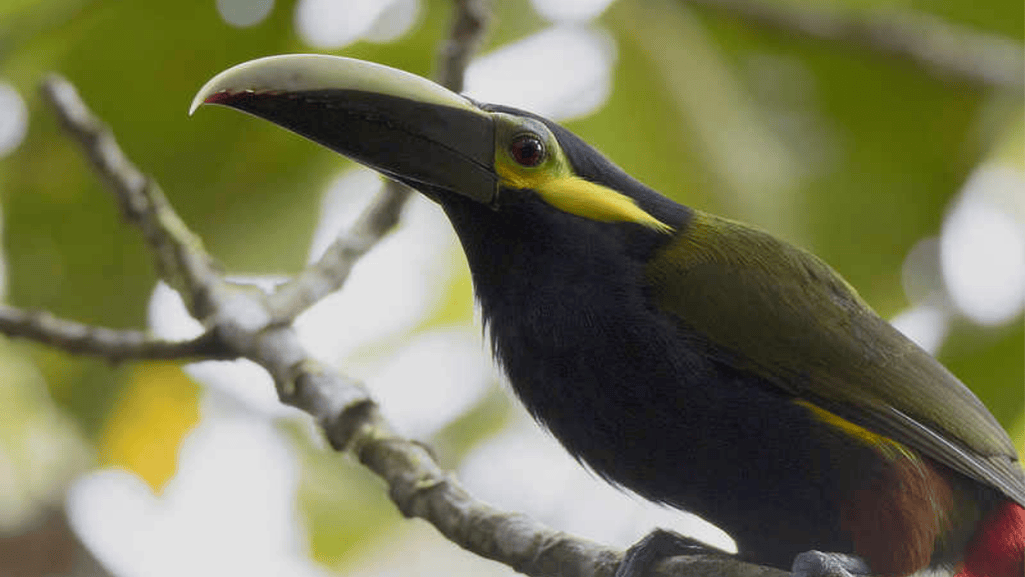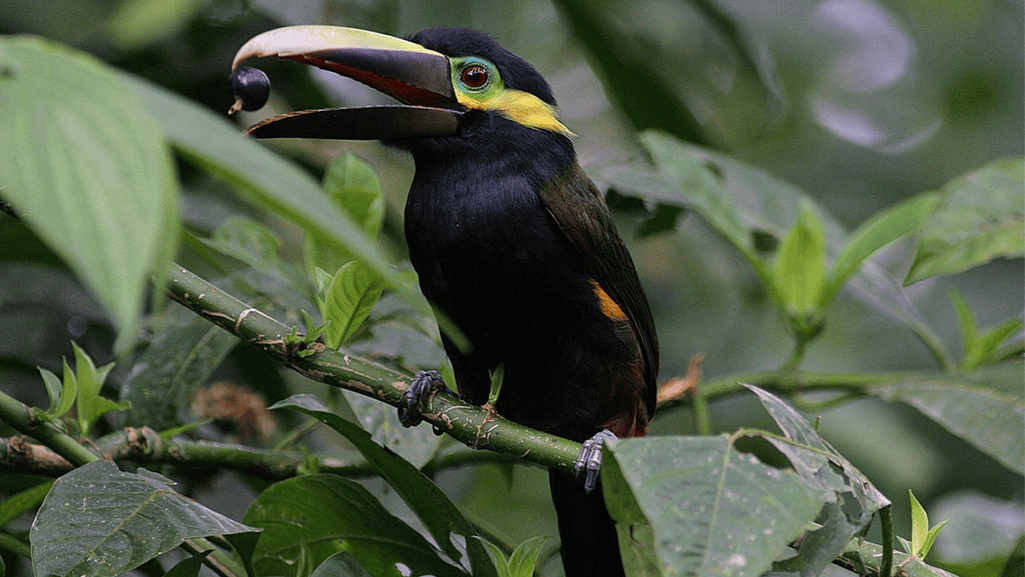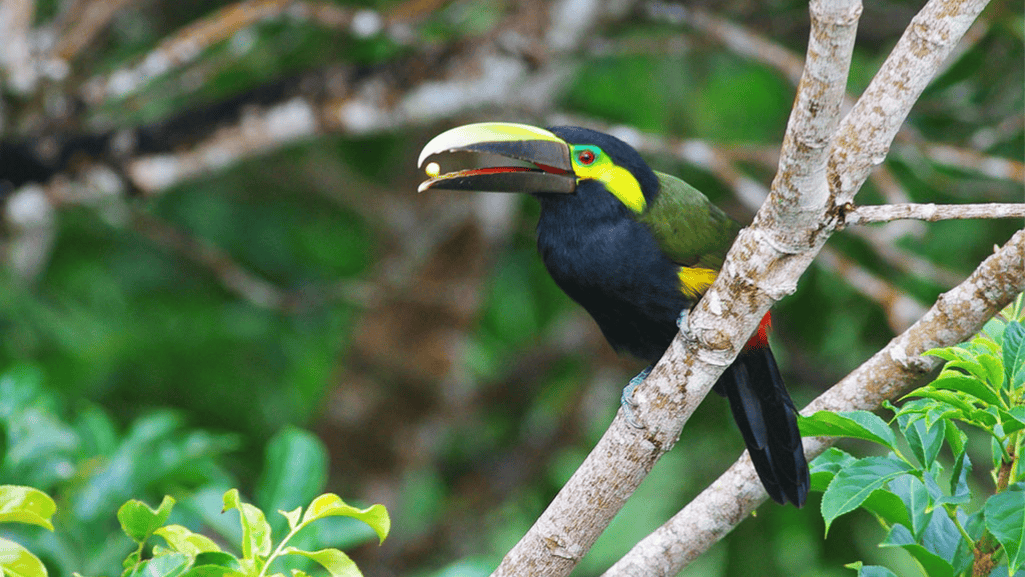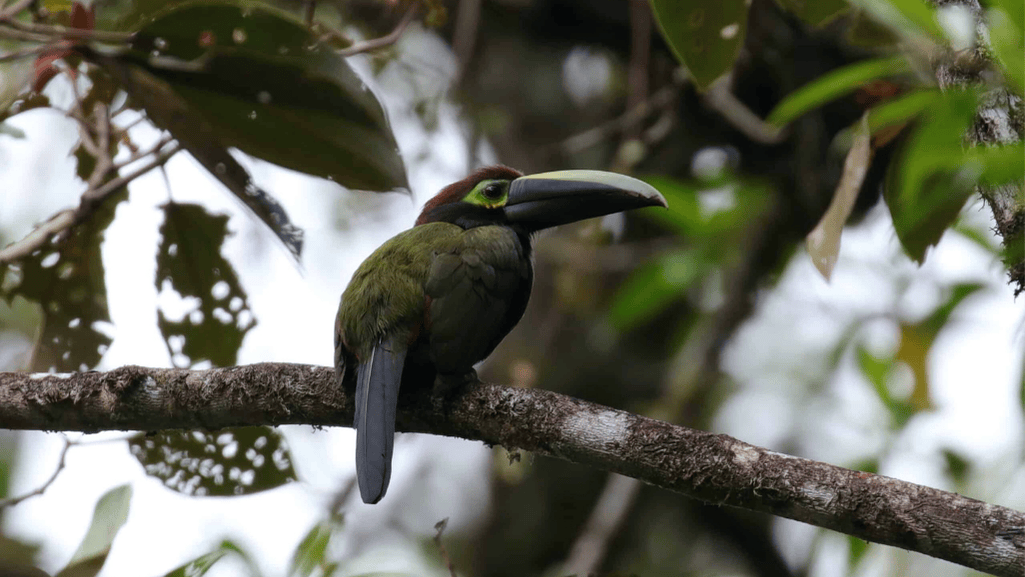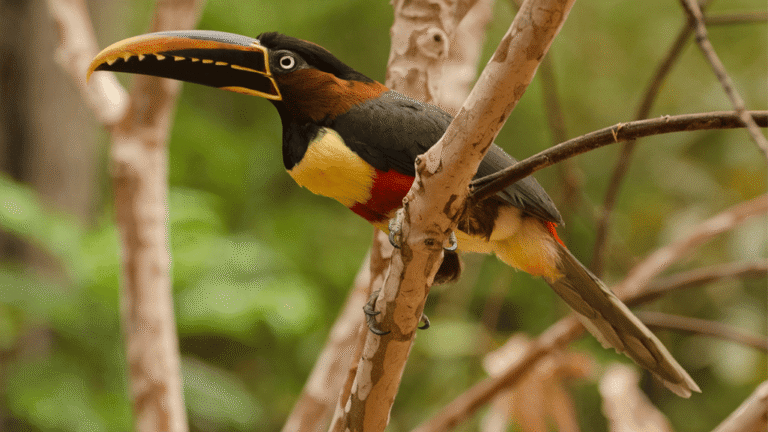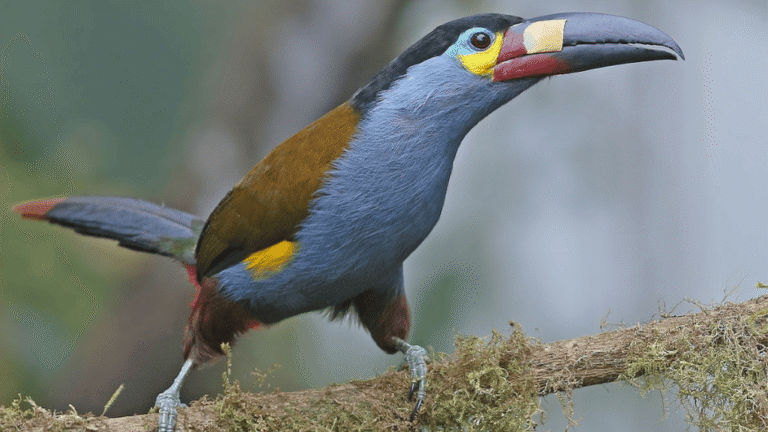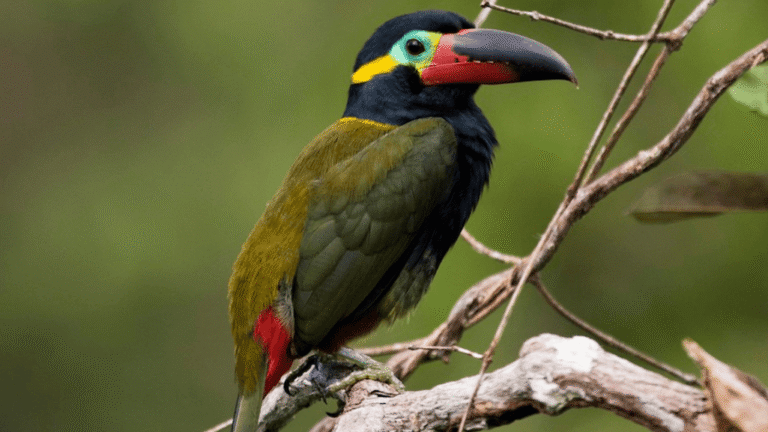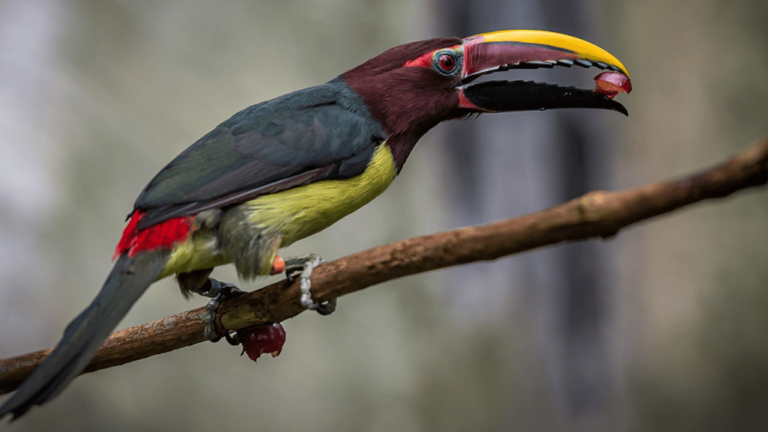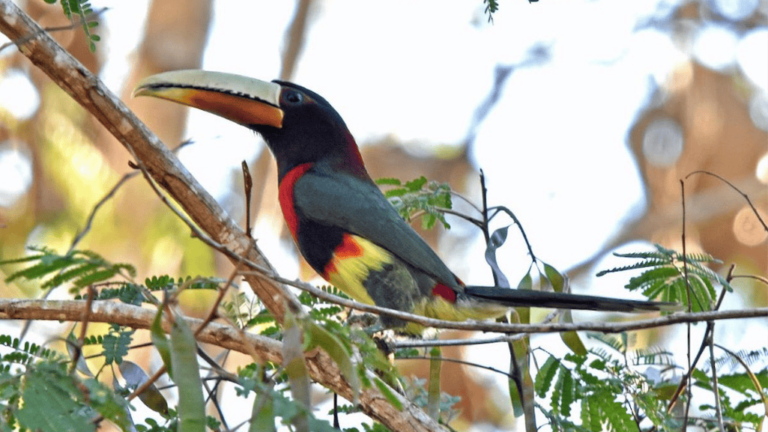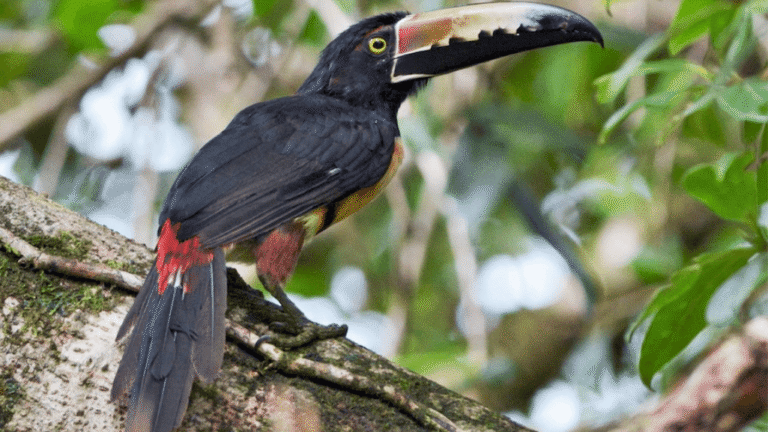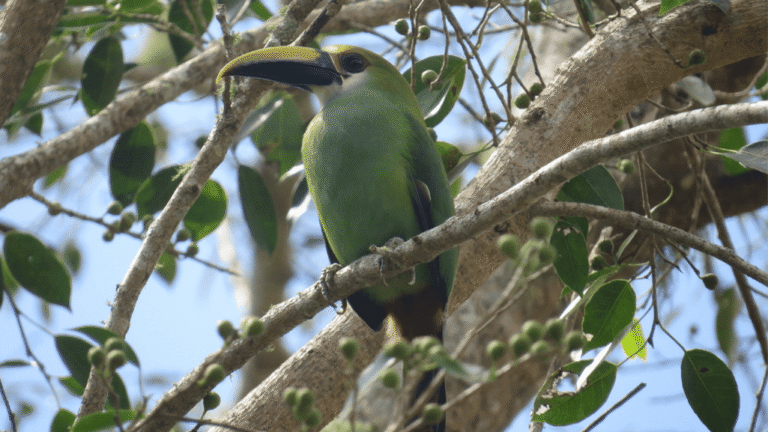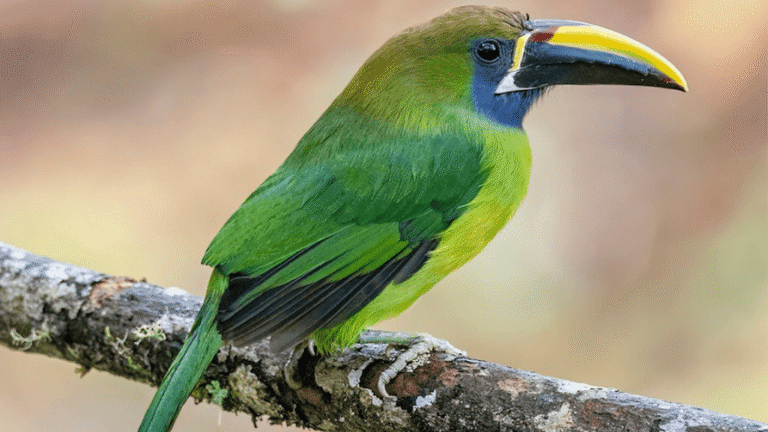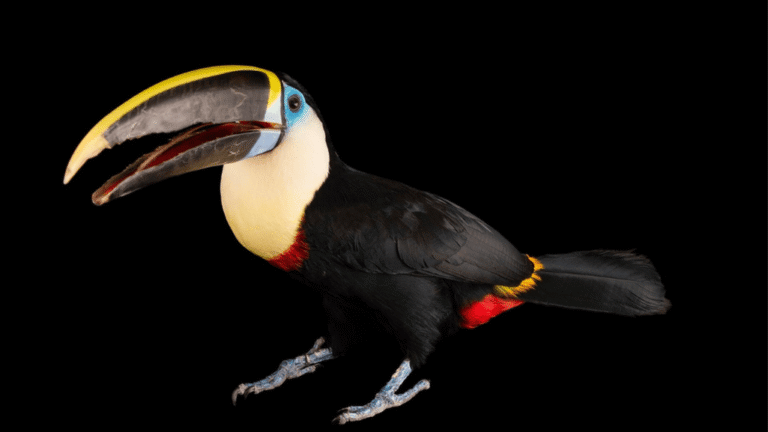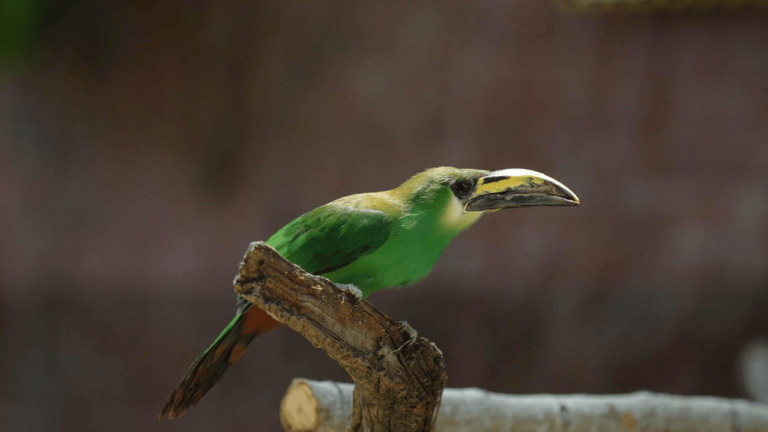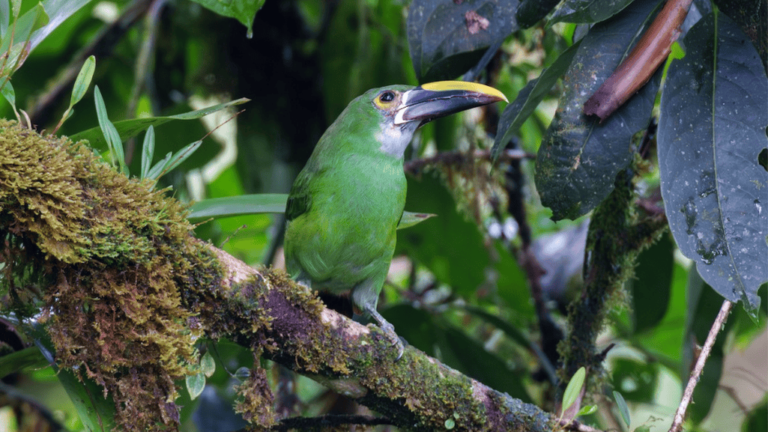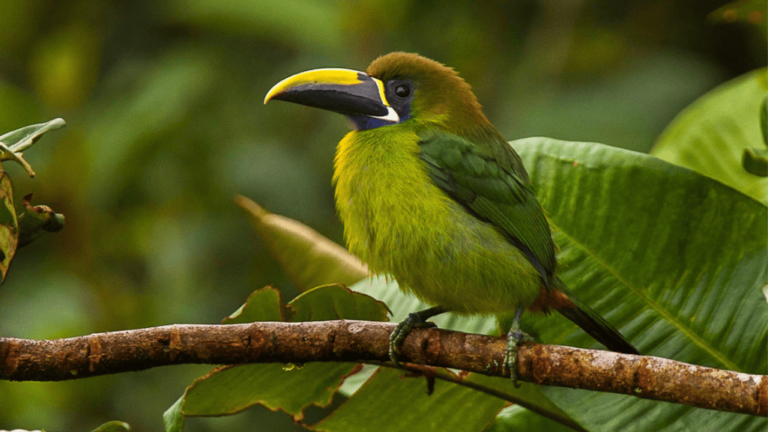The Yellow-eared Toucanet is a captivating bird species that has captured the attention of bird enthusiasts and avid bird watchers. With its vibrant plumage and distinctive features, this toucanet is a fascinating creature to observe in its natural habitat. Let’s delve into the world of the Yellow-eared Toucanet and uncover some intriguing facts about this enchanting bird species.
Key Takeaways:
- The Yellow-eared Toucanet is a toucanet species known for its striking appearance and unique habits.
- Bird enthusiasts are drawn to the Yellow-eared Toucanet for bird watching opportunities.
- Its physical characteristics include colorful plumage and a distinctive long bill.
- The Yellow-eared Toucanet exhibits specific habits and behaviors in its natural habitat.
- It is found in specific regions of Central America and northwestern South America.
Physical Characteristics of the Yellow-eared Toucanet
The Yellow-eared Toucanet (Selenidera spectabilis) is a stunning bird species known for its colorful plumage and unique physical characteristics. Let’s explore the distinctive features that make this toucanet stand out in the avian world.
Appearance
The Yellow-eared Toucanet has a black body, accompanied by chestnut thighs and a red vent. Its back and wings showcase a beautiful shade of olive green. One of the most striking aspects of this bird is its long bill, which is bicolored in yellow and black. Additionally, the Yellow-eared Toucanet has a red eye surrounded by green and yellow bare skin.
Male Yellow-eared Toucanets possess a conspicuous yellow ear patch, adding to their allure. On the other hand, females exhibit a chestnut crown and nape, reflecting their unique characteristics within the species. As the largest member of its genus, the Yellow-eared Toucanet measures approximately 38 cm in length, making it a remarkable sight to behold.
Visual Representation
Take a look at this captivating image of a Yellow-eared Toucanet:
Summary Table:Observations and Discoveries of the Yellow-eared Toucanet
| Physical Characteristics | Description |
|---|---|
| Plumage colors | Black body, chestnut thighs, and a red vent |
| Back and wings | Olive green |
| Bill | Bicolored in yellow and black |
| Eye and bare skin | Red eye surrounded by green and yellow bare skin |
| Male characteristics | Conspicuous yellow ear patch |
| Female characteristics | Chestnut crown and nape |
| Size | Around 38 cm in length |
Habits and Behavior of the Yellow-eared Toucanet
The Yellow-eared Toucanet, a resident of the foothills of Central America and northwestern South America, exhibits interesting habits and behaviors in its natural habitat. This shy and elusive bird is most commonly found concealed in the upper levels of the forest, where it forages for food and nests.
The presence of the Yellow-eared Toucanet can often be detected by its unique dry, clacking croak, which sounds similar to that of the Keel-billed Toucan. This distinct vocalization serves as an identifier for this species.
Foraging is an important activity for the Yellow-eared Toucanet, which feeds on a variety of fleshy fruits. In addition to fruits, it occasionally preys on small animals such as lizards, insects, and spiders. This diverse diet ensures the bird’s nutritional needs are met.
The Yellow-eared Toucanet nests in tree cavities, either excavated by woodpeckers or formed naturally. This behavior allows the bird to find a safe and protected space for its nesting activities and the rearing of its offspring.
Both parents play an active role in parenting. They take care of the young birds during the entire rearing process, including feeding, protecting, and teaching them essential survival skills. This cooperative parenting behavior contributes to the success of the Yellow-eared Toucanet’s offspring.
The lifespan of the Yellow-eared Toucanet can extend up to 20 years in the wild, depending on various factors such as habitat availability, predation, and overall health. Conservation efforts are crucial to ensuring the continued well-being and survival of this remarkable bird species.
| Key Habits and Behaviors of the Yellow-eared Toucanet | ||
|---|---|---|
| Foraging | Nesting | Parenting |
| Feeds on fleshy fruits | Nests in tree cavities | Both parents participate in rearing |
| Occasionally preys on small animals | Cavities excavated by woodpeckers or formed naturally | Feeding, protecting, and teaching offspring |
Distribution and Conservation Status of the Yellow-eared Toucanet
The Yellow-eared Toucanet is a captivating bird species found in the foothills of Central America and northwestern South America. Its range extends from south Honduras to northwestern Ecuador, with a notable population in the foothills of Panama at elevations between 450 to 1050 meters.
This unique toucanet species often finds itself on the “wish lists” of bird enthusiasts visiting the region due to its restricted range and retiring habits. Observing the Yellow-eared Toucanet in its natural habitat is considered a rewarding experience for bird watchers and nature enthusiasts.
The conservation status of the Yellow-eared Toucanet is currently assessed as Least Concern (LC) by the International Union for Conservation of Nature (IUCN). This designation indicates that the species is not facing any significant threats that could lead to a decline in its population. However, ongoing monitoring and conservation efforts are necessary to ensure the long-term survival of the Yellow-eared Toucanet and its habitat.
Efforts to protect and conserve the habitats where the Yellow-eared Toucanet resides are vital for the preservation of this beautiful bird species and the biodiversity of its ecosystem. By raising awareness about its conservation status, as well as the importance of habitat preservation and sustainable practices, we can contribute to safeguarding the Yellow-eared Toucanet for future generations.
Conservation Table
| Conservation Status | Description |
|---|---|
| Least Concern (LC) | The Yellow-eared Toucanet is not currently facing any major threats to its population. |
Observations and Discoveries of the Yellow-eared Toucanet


Bird enthusiasts and researchers have made numerous observations and discoveries related to the Yellow-eared Toucanet. These observations contribute to our understanding of its behavior, habitat preferences, and ecological role.
Here are some interesting findings:
- Over 3,364 observations of the Yellow-eared Toucanet have been recorded in various locations.
- There are 992 photos capturing the beauty and unique features of this bird species.
- Researchers have made 36 recordings of the Yellow-eared Toucanet’s distinctive vocalizations.
- There are 26 videos showcasing the toucanet’s fascinating behaviors in its natural habitat.
These valuable resources provide bird enthusiasts and researchers with a wealth of information about the Yellow-eared Toucanet’s habits, interactions with its environment, and overall conservation needs. By studying these observations and discoveries, scientists can further advance our knowledge of this incredible bird species.
Conclusion
The Yellow-eared Toucanet is a captivating bird species that adds vibrancy and beauty to the tropical forests of Central and South America. With its distinctive colorful plumage and unique habits, it has become a favorite among bird enthusiasts and bird watchers. Despite being a shy species with a limited range, efforts are underway to conserve its habitat and ensure the continued presence of this remarkable tropical bird.
Observations and research on the Yellow-eared Toucanet have contributed significantly to our understanding of its ecology and its role in the ecosystem. The information gathered from these studies helps bird enthusiasts and researchers gain insights into its behavior, habitat preferences, and its overall impact on the surrounding environment.
As a testament to its allure, the Yellow-eared Toucanet attracts bird enthusiasts from all over the world who are eager to catch a glimpse of this stunning bird species in its natural habitat. The conservation of the Yellow-eared Toucanet is of utmost importance to ensure the preservation of its unique beauty and contribution to the rich diversity of tropical birds.
FAQ
What is the Yellow-eared Toucanet?
The Yellow-eared Toucanet is a vibrant toucanet species known for its colorful plumage and unique habits.
Why is the Yellow-eared Toucanet sought after by bird enthusiasts?
Bird enthusiasts are drawn to the Yellow-eared Toucanet for bird watching due to its striking appearance and fascinating behavior.
What are the physical characteristics of the Yellow-eared Toucanet?
The Yellow-eared Toucanet has a black body with chestnut thighs, a red vent, and olive green back and wings. It has a long bicolored bill, with yellow and black colors, and a red eye surrounded by green and yellow bare skin. Males have a yellow ear patch, while females have a chestnut crown and nape. It measures approximately 38 cm in length.
Where does the Yellow-eared Toucanet forage and nest?
The Yellow-eared Toucanet forages in all levels of the forest but is most commonly found concealed in the upper levels. It feeds on fleshy fruits and occasionally preys on animals like lizards, insects, and spiders. It nests in tree cavities, either excavated by woodpeckers or formed naturally. Both parents take care of the young birds during the rearing process.
What is the distribution of the Yellow-eared Toucanet?
The Yellow-eared Toucanet is found in the foothills of Central America and northwestern South America, ranging from south Honduras to northwestern Ecuador. In Panama, it is found at elevations between 450 to 1050 meters.
What is the conservation status of the Yellow-eared Toucanet?
The conservation status of the Yellow-eared Toucanet is assessed as Least Concern (LC), indicating that it is currently not facing major threats to its population.
What observations and discoveries have been made about the Yellow-eared Toucanet?
Numerous observations have been recorded, with over 3,364 observations, 992 photos, 36 recordings, and 26 videos available. These observations contribute to our understanding of its behavior, habitat preferences, and ecological role.

